Nowadays, “speaker†is no longer just a carrier for playing music. Under the blessing of AI technology, it has become more intelligent and has become an important part of certain smart home ecosystems. At the end of 2014, Amazon, which was "inadvertently", launched its own smart speaker product, Echo, and became the first person to "eat crabs." It took the first step to become the smart home industry leader. .
Since its development, due to the promotion of the trend of the smart era in the future, coupled with Amazon's success stories, the "smart speaker" has gradually become an entry point for all manufacturers to compete for the smart home market.
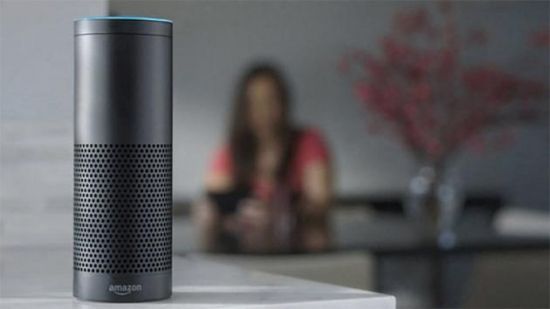
Snatch smart home entrance, battlefield of smart speakers surging
Shortly after Amazon launched Echo, the domestic Jingdong also joined forces with HKUST to fly its smart speaker "Kang" in the second year. At the time, the so-called smart speakers were truly amazing. By now, people have been wondering about smart speakers. As for why this is so, apart from the fact that the product is no longer strange, it is more of a visual aesthetic fatigue.
In November 2014, Amazon launched the smart speaker Echo, and early employees revealed that it had accepted more than one million subscriptions in two weeks.
In March 2015, Jingdong and HKUST jointly established Linglong Technology. On May 25th, Linglong Technology launched the smart speaker “DingDongâ€.
On October 5, 2016, Google officially launched the smart home Google Home at the autumn conference;
At the US CES in 2017, Lenovo released a smart speaker. At the global innovation and technology conference on July 20, it released a smart speaker SmartCast+ with intelligent projection, object recognition and AR touch interaction.
At the developer conference in June 2017, Apple announced the smart speaker HomePod;
On July 5, 2017, Ali held a new conference to launch the smart speaker "Tmall Genie X1";
On July 26, 2017, Xiaomi officially launched the smart speaker "Little Love Classmate" at the new product launch.
......
In addition, companies such as asking questions, asking questions, seeing oneself, and Wanyin have launched their own smart speaker products. As two of BAT's, Tencent executive director Liu Chi-ping said in an interview or will launch a smart speaker in August this year, the name temporarily "ear." As for Baidu, it is not an unusual road, and it has introduced an open platform DuerOS that can connect smart speakers and other devices.
Recently, Jingdong released a smart speaker report "China's smart speaker industry development analysis," which will be divided into intelligent speaker exploration period from 2012 to 2018 - the development of artificial intelligence and Internet of things technology laid the foundation for the smart speaker outbreak . According to relevant data, the scale of China's smart home market reached 60.57 billion yuan, an increase of 50.15% year-on-year, and this figure is expected to reach 139.6 billion yuan by 2018. Therefore, although it is still in the exploratory period, from the perspective of the products listed above, the horn sound of domestic smart speaker battles has been sounded, especially after giant companies such as Ali and Xiaomi joined.
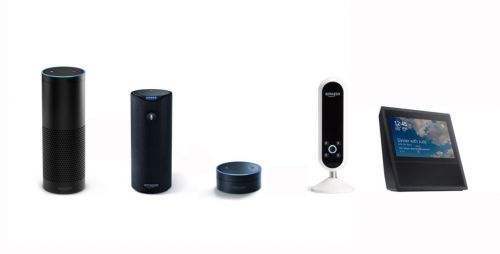
Smart speaker is almost stereotyped, and some people have innovatively added a block display
Perhaps Amazon's "demonstration" role was too successful. In addition to internal technologies and access to third-party services, these so-called smart speaker technologies at home and abroad are almost a model carved: a vertical version of a straight tube, One-step control of smart home products, the entire look is a "repertoire", has become a slot for smart speakers inside and outside the industry.
Because of the overly uniform style, users now almost have to “shape†the shape design of smart speakers. However, Amazon, the originator of smart speakers, suddenly killed a “back carbine†and launched a brand new smart speaker product called “Echo Showâ€. It not only has an angular shape, but also adds a display screen. Although there was no fanfare for propaganda, there was intense discussion within the industry about this extra display.
In fact, Phil Schiller, Apple’s senior vice president of marketing, used it to “snead†Amazon’s Echo. He said: "In a lot of scenarios, the voice assistant has a huge effect, but this does not mean that you do not want a screen. I think if (smart speakers) do not configure the screen, I am afraid that can not meet the needs of some scenes." And behind the Echo Show The timely introduction of what seems to be in evidence also confirmed this statement.
For the emergence of the display screen, most people still liked it, because in theory, its emergence means better human-computer interaction and user experience. As demonstrated in the Echo Show promotional video, because of the addition of a display screen, people can see the data information fed back by smart speakers in a more intuitive way, so that they can meet their needs more quickly and effectively. .
I remember when I first attended an artificial intelligence summit, Xiao Chu's home partner, Li Chuangang, once said that Chinese families need communication, and more importantly, video communication. Although they are robots, to some extent robots and smart speakers are two products with the same attributes. Similarly, in the Echo Show promotional video, we also saw the "video communication" element.
Simply speaking from the perspective of user experience, the addition of “display†is undoubtedly a big impact on pure smart speakers. As a result, the smart home industry, which is one of the entrances to smart speakers, has also generated a lot of shock.
However, what is puzzling is that if the “display†exactly caters to people’s needs, why does today’s market only see smart speakers that are “routine� Why are no domestic manufacturers able to take the lead in making a smart speaker with a display?
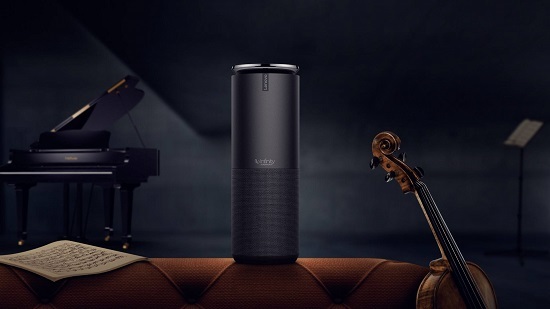
Smart speaker with display is not nobody to do, but the heat has not yet reached
Because of the extremely similar shape design, the current smart speaker market is just like “squandering for fascinating eyesâ€. Fortunately, in the vast variety of brands and products, we still dig out a few smart speakers with a display, such as the Himalayas "Xiaoya", and such as cool dog smart speakers ... ...
Of course, in a sense, these smart speakers are not what we now call "smart speakers." This means that smart speakers with a display aren’t nobody doing it, they just force it into different places. At this time, we may wish to think about why the smart speaker, which is one of the entrances to the smart home, has no idea of ​​adding a display to it. When scrutinized carefully, there are two factors:
The smart home ecology has not yet been matured and there is no time to consider the display
Only within one kilometer radius of Nanshan District of Shenzhen, hundreds of intelligent speaker solutions were assembled. They received voice modules and chips from various companies in the supply chain, and quickly developed a solution. This is a microcosm of the current domestic smart speaker market.
For some small manufacturers, they do smart speakers more often when they fight for a fast-selling product, and regardless of their smart properties, they don’t need to say more. We mainly look at the big players like Jingdong and Ali. In voice interaction, their technology has basically satisfied the needs of users. However, since it is the entrance of smart homes, the ecological circle covered by smart speakers is also an extremely important consideration.
Since its introduction, Amazon’s voice control applications have exceeded 15,000, compared to domestic smart speakers. For example, Jingdong, apart from the graffiti intelligence platform to which they are connected, the only products that can be controlled by its Jingdong Micro-Link APP are less than 600, and the situation of the Ali Tmall Genie X1 is expected to be similar. This exposes a problem of "old folks" - unified interface protocols for smart home products.

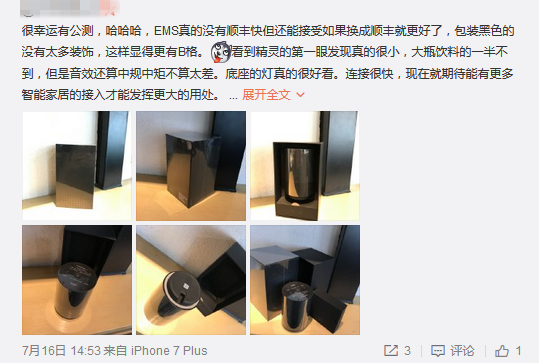
The above is the user's suggestion for Tmall Genie X1. From our intuitive understanding, because of the incompatibility of interfaces, many smart single products can only be rejected by some players' smart home ecosystem. This is the first thing that constitutes a bad user experience and hinders the development of the ecosystem. turn off. Since the preparation for the first pass has not been done well, how can the details of the user experience be improved?
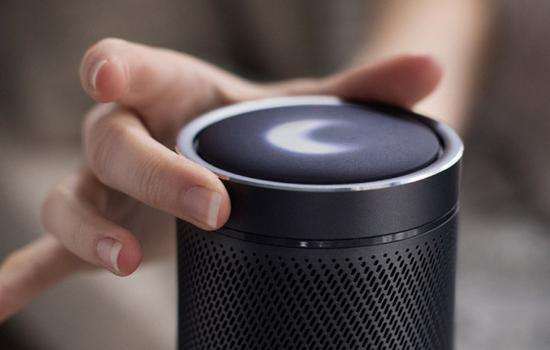
Before the user experience was optimized, “homogeneous†products made the display of smart audio lose its meaning
“The screens added by smart speakers are in fact of little significance. The usage rate will not be higher than the frequency of TVs and mobile phones, and it will increase the cost, and it will raise the selling price. Consumers find it difficult to accept them,†said CEO Lu Lufeng. In essence, this involves a "homogeneous" problem.
In fact, not only TVs and mobile phones, but also in the smart speaker report released by Jingdong, it also mentioned the same problem. The report shows that the current smart speaker faces a dilemma:
In the outbreak of market disruption, product homogeneity is serious, and simple and inexpensive products further exacerbate consumers' experience. Other potential smart home control centers, such as service robots and smart TVs, will continue to seize this market.
Of course, more of this refers to the services provided, but the "display" also applies to this dilemma. Taking the service robot as an example, two service robots with opposite appearance, appearance or cuteness or cuteness are obviously more popular among families than smart speakers. Most of these robots have been equipped with displays since their inception. They are family members, family and friends. The interaction between people and smart hardware provides a platform.
Under this kind of premise, the display screen is equivalent to a dispensable item for the smart speaker. As a result, the smart speaker manufacturers' pursuit of the display is not so strong.
Conclusion
At present, the domestic smart home related service providers are still stuck in the "smart speaker" of the quagmire without self-extraction, lacking a little "innovative" and "personality."
Indeed, the launch of the Echo Show made it possible for people to see another form of smart speaker that attracted everyone to discuss it. One day in the future, perhaps the display screen of a smart speaker is also like a "straight-tube" smart speaker, and it will also set off an upsurge of "follow-up" in China. However, from the current situation, this phenomenon should not appear in the short term.
Wired Earbuds,Earbuds With Mic,Wired Earphones With Mic,In-Ear Headphone With Mic
Guangzhou YISON Electron Technology Co., Limited , https://www.yisonearphone.com